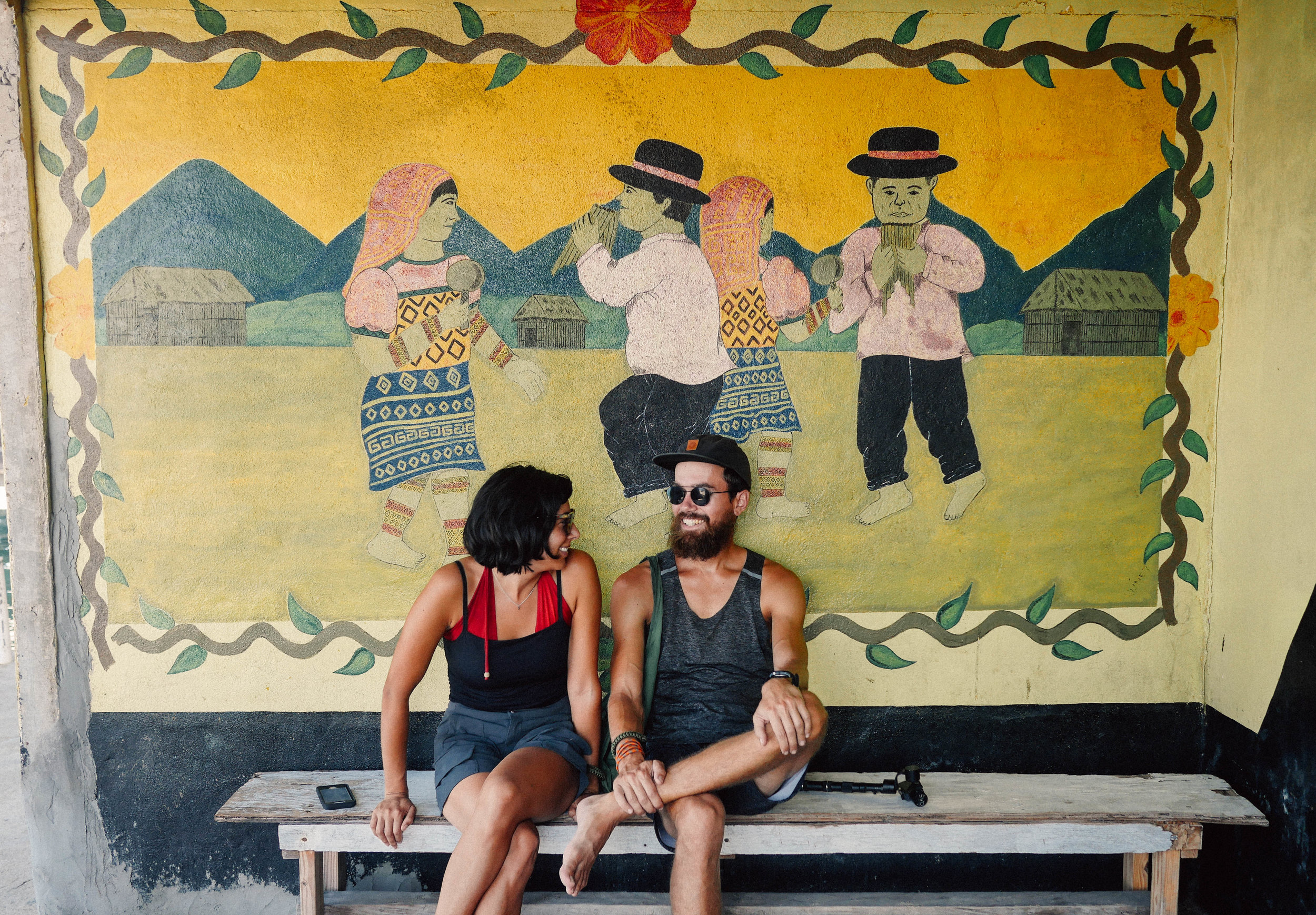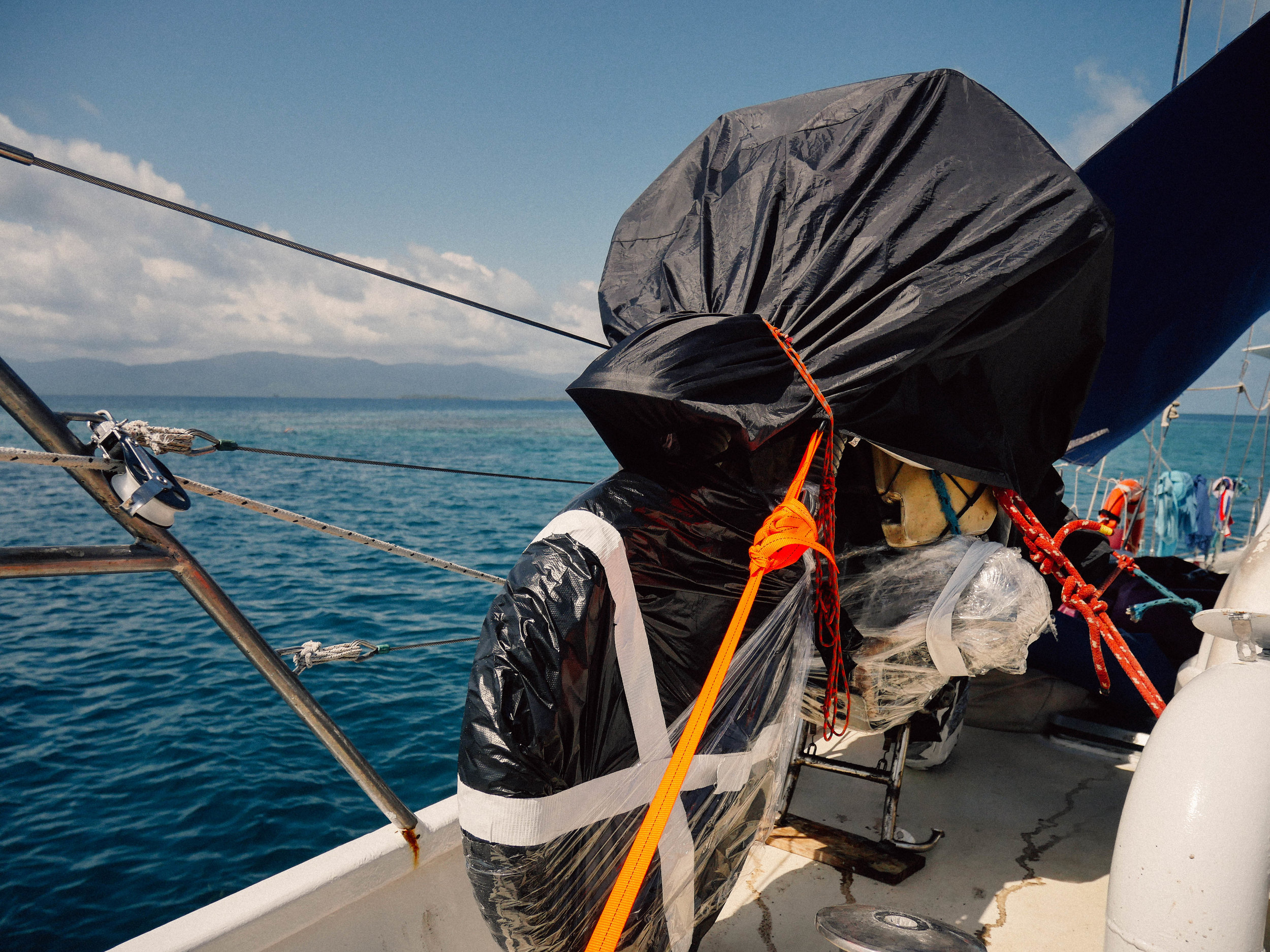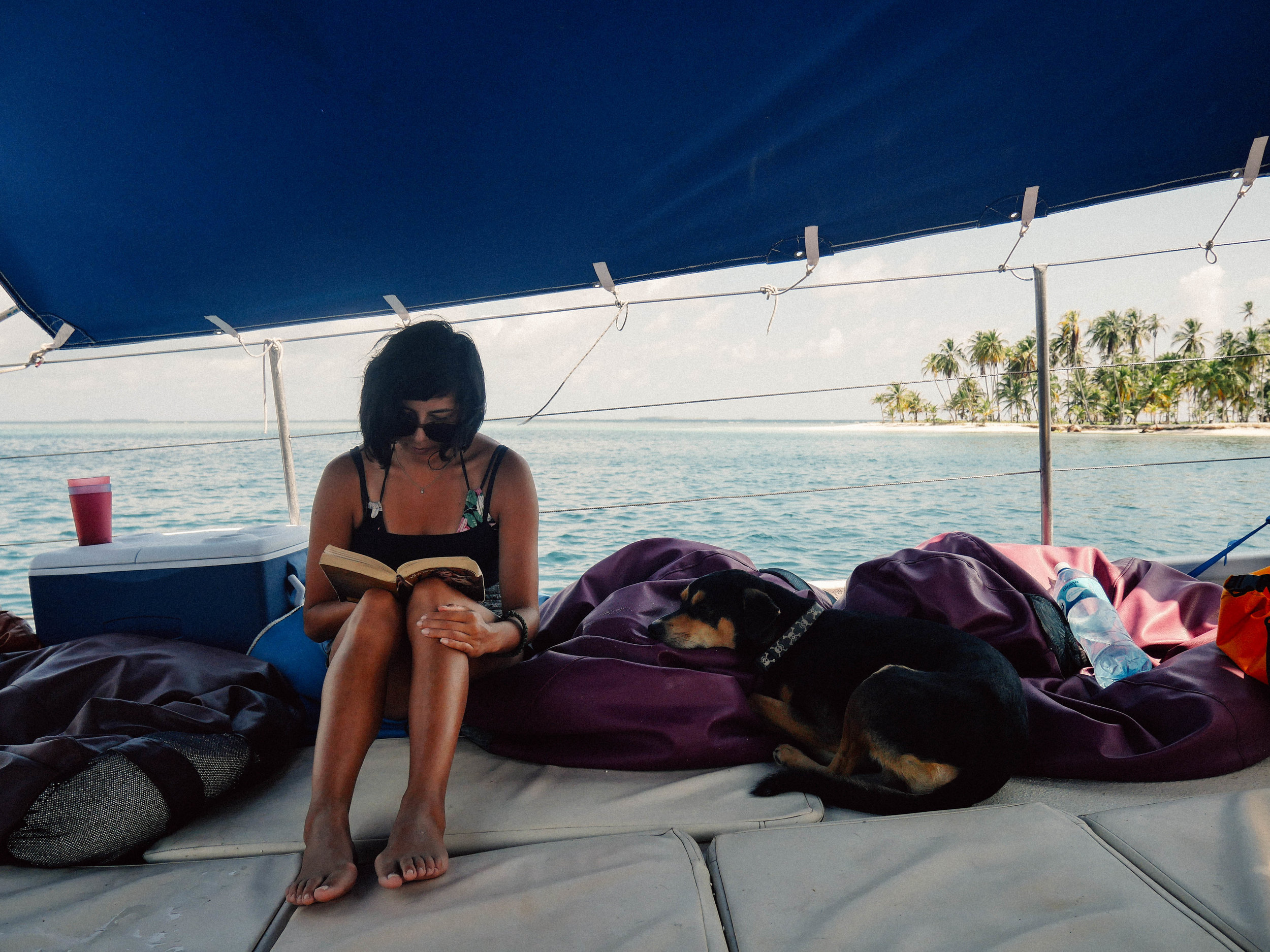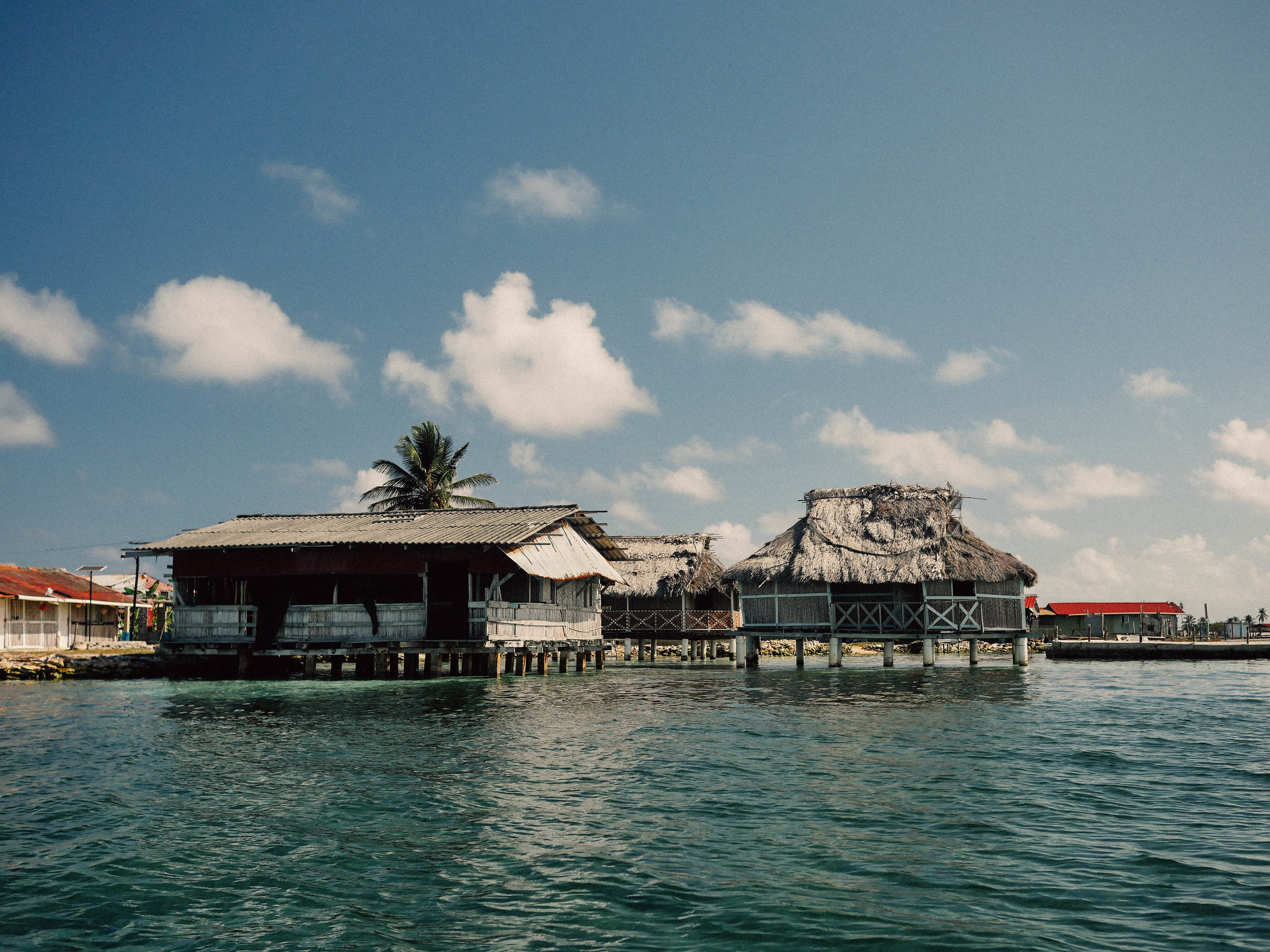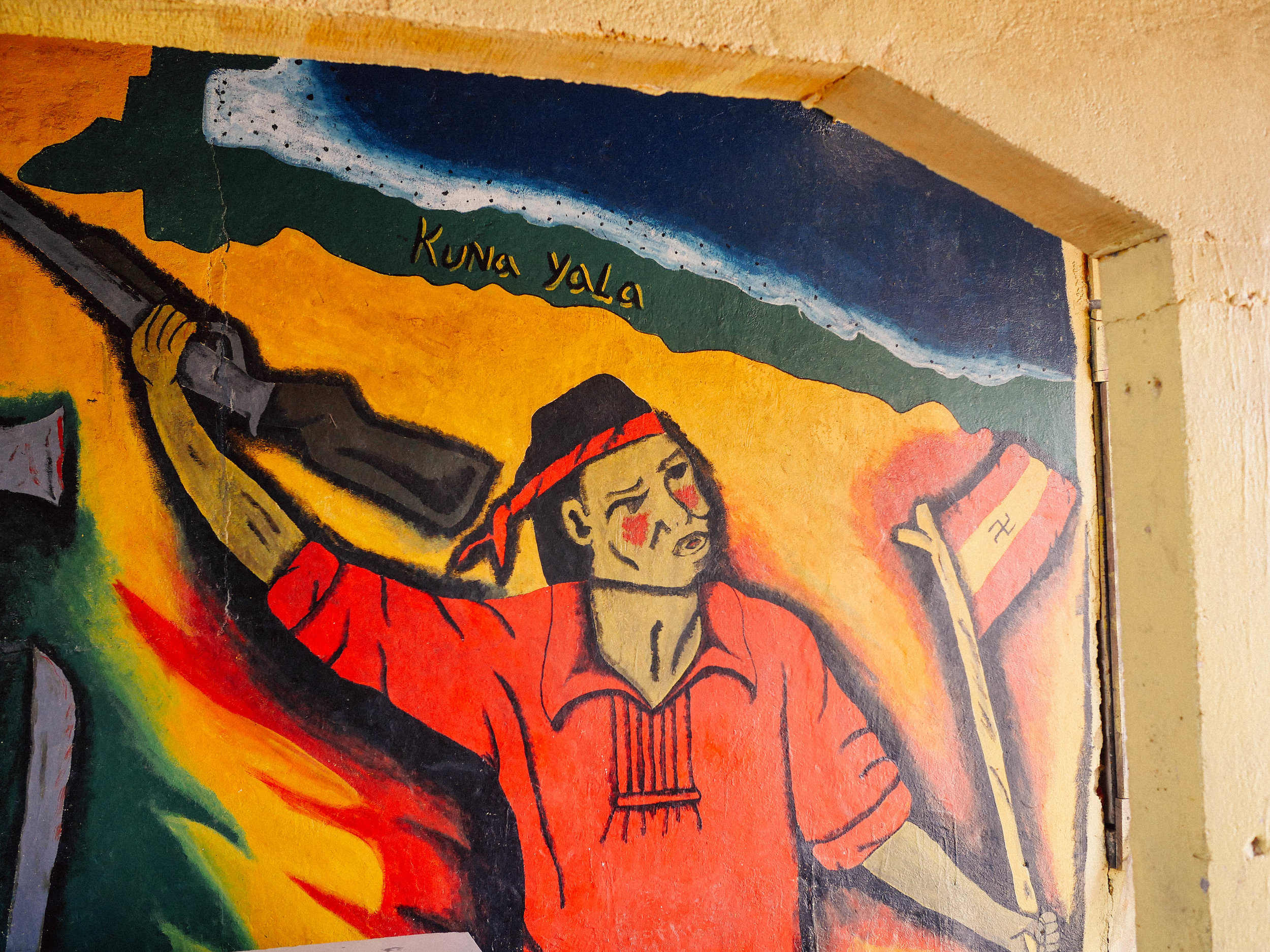We never entertained the formidable challenge of crossing the Darien Gap overland so we had three options to get to Colombia.
Put the bike in a shipping container and fly to meet it in Cartagena.
Pack the bike on plane and fly together to Bogota.
Strap the bike to the deck of a sailboat and sail together to Cartagena.
Being unapologetic romantics, we opted for option three.
There are arguments to be made for and against all three options. A container could potentially be the cheapest if we could fill it with enough bikes, but coordinating with other adventure riders is worse than herding cats and we would have to suffer being separated from our steed for several days. We have also heard, but not verified, rumors of containers never arriving. Flying is perhaps the simplest of the three options. It costs about the same as sailing and in a few hours we would be unloading in Bogota. However, bikes do occasionally get damaged in the shipping process and, let’s face it, flying isn’t the sexist way to travel.
There are many boats that sail the route from Colon, Panama to Cartagena. They typically also island hop in the San Blas islands for snorkeling along the way. However, only a handful take motorcycles. Of these, the Stahlratte and Wild Card are probably the most respected.
The Stahlratte is an historic steel hull Dutch Schooner that enjoys almost legendary status among adventure motorcyclists, but on our dates it was sailing to Cuba, so we decided to go with Wild Card. We couldn’t be happier with our experience with them. First of all they have a great website with a lot of information that makes it easy to plan and relieves a lot of stress from the process. They were responsive and professional from the time we first contacted them through the entire sail. The food was delicious, the boat was in excellent condition, Captain Charlie was fun to hang out with, and the other passengers were great company. Charlie also made an effort to allay my fears about loading the bike, offered some advice about protecting it from the elements, and tied it down very tightly so it did not move at all during the voyage.
All that being said, there were some things we wished that we knew ahead of time. I want to offer some advice from my experience for any motorcyclists reading this who might be considering a similar voyage.
Book early
There is limited space for motorcycles on sailboats and they fill up fast. Wild Card carries a maximum of three at a time. Be prepared to book at least a month in advance. It is difficult to plan so far ahead in Central America and this is the primary reason we’ve heard from other riders for why they decided to fly.
Customs is more complicated
Wild Card handles the Bill of Lading paperwork.
Throughout the process Wild Card helped make sure we had the necessary paperwork. Some boats leave you to handle everything.
Get vehicle inspection in Panama City in the week prior to departure.
Arrive before 8:00 AM or you might need to be persuasive. We arrived at 9:30 and had to beg for them to inspect our bike that day. A bribe might have been expected. It is hard to tell.
Get the vehicle stamped out the day before departure in Colon.
The office is behind an unlabeled door in a nondescript complex without an entrance. This was simple once we found the right place.
Stay a night in the tiny port town of Puerto Lindo.
We had far more cash than we were comfortable carrying. There is no ATM in the town. In fact the only store is a little window selling snacks, water and beer. There is slow wifi that can be rented by the half-hour in the afternoon from a dive shop.
Your bike will get salty
With little else to do in Puerto Lindo, you will have time to prepare your bike for the seas. Bear in mind that, in spite of preparations, it will get wet and rust and corrosion will appear.
Coat everything metal (except your brake rotors, obviously) with WD-40.
Block any holes, like exhaust pipes, that will allow salt water in.
Unplug your battery to help prevent corrosion build up on your terminals.
Loading the bike is nerve-wracking
First make sure your gas tank is close to empty. The bike is lifted by hand onto a little panga boat. Then the rider straddles the bike while it is motored out to the sailboat in the harbor. There a strap is wrapped under the bike and it is lifted by winch over the side of the boat. This was easily the most stressful part, but ultimately was accomplished without a problem.
The captain takes care of lashing the bike down, but all the protection is your responsibility. Once the bike is strapped we covered it with a bike cover, wrapped big garbage bags over the wheels, and then wrapped cling wrap over everything that we could. I would suggest buying a large industrial roll of cling wrap in Colon and wrapping your bike as thoroughly as possible. Maybe you will cringe less when waves come crashing over the bow.
Upon arrival in Cartagena, the entire process is reversed and, arguably, is more difficult. From the sailboat the bike is lowered by winch into a panga boat, only this time the panga boat is rocking in the waves of the harbor and the bike is placed across seats instead of on the flat bottom of the boat. At first it did not look possible, but again, it was accomplished without a problem. Lifting the bike to the dock, likewise, took more effort, but with enough hands, was managed.
There used to be an agent fee of $100, but that didn’t exist anymore when we did it.
Customs in Cartagena was stupidly difficult
First you have to wait for your the captain to return with your passports. This can happen as quickly as an hour or as long as three hours. We got ours back pretty fast. Then you have to ride, illegally, to the customs office nearby to get your vehicle inspected and checked into the country. The office is closed from 12:00 - 1:30 for lunch.
After we got our paperwork filled out, it inexplicably took three hours to get it approved. Perhaps there was a soccer match, or perhaps they were expecting a bribe. Just don’t expect it to be quick. After you get your paperwork you have to go to a special office to get SOAT insurance. It is a thirty minute walk or a short cab ride. Again you aren’t legally allowed to ride your bike yet.
The office is open until 5:00, but they claimed they could only accept payment until 2:00. They told us we needed to come back the next day. For us that would mean the inconvenience of leaving our bike at the customs office overnight. After pleading with three different agents, each of whom insisted to us it was impossible, we threw up our hands and left. While we were standing on the curb trying to hail a cab, one of the agents came out and said that maybe he could do something. Miraculously (or not) they figured out a way to accept our payment and we managed to purchase our obligatory insurance. Perhaps this was some unintelligible South American bureaucratic nonsense that insurance companies have to deal with, or perhaps they were testing if they could get a little extra from us. It is hard to tell, but it was infuriating.
Ultimately from the time of disembarkation it took seven hours for us to check into Colombia, longer than any Central American country. And we were told we were lucky we got it done in a day!
In Cartagena, you will want to find a pressure washer as soon as possible to wash off the salt deposits. The longer you wait, the more rust and mineral deposits will build up.
The San Blas islands are amazing
We spent so much time thinking about the bike, that we did very little to prepare for the sail itself. Our sail was over five days and including three days exploring the blissful San Blas islands off the coast of Panama. This group of 365 autonomous islands won their independence from Panama in 1925 and are governed by the indigenous Kuna people. Many of the islands are unpopulated, some support only a family or two who sell coconuts and beer to visitors, and a few have larger settlements of up to a thousand.
We had the opportunity to take a tour of the largest ‘city’ with a dreadlocked, tattooed guide named Cannabis who was adopted as a baby and grew up in New Jersey only to return to the Kuna as an adult backpacker. He now introduces travelers to his native culture and is engaged in creative efforts to curb the rampant pollution that unfortunately plagues the larger islands.
We spent the majority of our time on tiny, scarcely populated idyllic islands. During these three days of paradise we napped in hammocks, snorkeled around the reefs, played volleyball, and drank water from fresh, warm coconuts. We built a giant bonfire of dry palm leaves. We ate fresh fish and crawfish the size of lobsters. The calm beauty of the Caribbean islands and their clear turquoise waters, white sand beaches, and swaying palm trees is practically archetypal. It is a place you could lose your sense of time and forget all your worries.
Prepare yourself for a rough ride
After the islands, the real sailing began. What followed was thirty-something uninterrupted hours on the boat. For most of us this was not especially enjoyable. We spent hour upon nauseating hour sweating in our cramped bunks, or on the foredeck hugging the bean bags and bracing our prostrate bodies as the boat listed generously in the wind and praying that our stomachs would not turn.
As I hovered on the edge of a sleepless fever-like semi-consciousness, I lamented my choice to sail the Darien Gap. In that moment I would have foregone the magical San Blas islands and paid a significant sum to be transported off the boat. I felt there was nothing remotely romantic about blistering in the sun, unable to read, talk, or even stand, handicapped by a nearly overwhelming nausea, watching as wave after wave crashed over my bike, fearing what rusted ruin I would find when I lifted the covers in Cartagena.
With a little time, I don’t harbor such hard feelings. In truth, I ought to have lamented my negligence. A little dramamine, a large bottle of water, and an audiobook would have helped immensely to ease my pains and pass the time. Some of the other passengers had better foresight than I and almost seemed to be enjoying themselves.
It was an immense relief to awake to find ourselves rocking quietly in the harbor of Cartagena.
A cautious recommendation
There is a lot to consider, both in terms of the tactical work, and the physical toll of sailing. It took a great deal of patience, a fair amount of preparation, and unfortunately a little wear on the bike, but we were rewarded with an unforgettable adventure.
Side note
If you arrive in Cartagena and, like me, are in need of a good mechanic. I recommend James Koriea Franco (317 218 1745). He works on KTMs, KLRs, and BMWs, among others.


